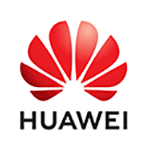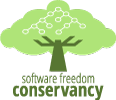TensorFlow Day (sponsored by Google Cloud and IBM)
What you'll learn
- Learn what you need to know about TensorFlow in one day
Description
The machine learning revolution is powered by open source. The developers of TensorFlow believe machine learning should be available to all, so we’re holding a day at OSCON where you can talk about the project, explore collaborations in progress, and maybe start one of your own.
We’ll have a full day of talks from TensorFlow contributors, great demos, and an open hacking room where you can get hands-on with TensorFlow and learn how you can be a part of the project.
Attendance is open to any registered OSCON attendee, including those with Expo Plus passes. Register here.
Presentations:
The state of TensorFlow—Sandeep Gupta (Google)
TensorFlow is one of the world’s biggest open source projects, and it continues to grow in adoption and functionality. Sandeep Gupta shares major recent developments and highlights some future directions for the project
Introduction to fairness in machine learning—Hallie Benjamin (Google)
Hallie Benjamin offers an introduction to the emerging field of machine learning fairness, explains how it’s relevant to the developer community, and shares resources for learning more.
Farm to table: A TensorFlow story—Gunhan Gulsoy (Google Brain)
Gunhan Gulsoy shares the inside story of how the very popular source project TensorFlow is kept running and sheds light on how TensorFlow is continuously built and tested and how everything is kept green through dozens of changes daily.
Hassle-free, scalable machine learning with Kubeflow—Barbara Fusinska (Google)
Kubeflow is a toolkit that draws on Kubernetes’s strengths to help data scientists create, train, and publish the models in a hassle-free and scalable way. Barbara Fusinska explains how to use the platform to build models and deploy it, adjusting the computation environment.
A voice interface for electronic health records—Ton Ngo (IBM), Yi-Hong Wang (IBM)
We typically interact with a web app by clicking and typing information. However, there are situations when this interaction is not convenient or possible. Voice is a much more common and convenient method for interaction. Ton Ngo and Yi-Hong Wang explain how TensorFlow.js can help a web-based electronic health record system leverage deep learning models to make this voice interface possible.
Project Magenta: Machine learning for music and art—Sherol Chen (Google)
Sherol Chen offers an overview of Project Magenta, a research project exploring the role of machine learning in the process of creating art and music. Primarily this involves developing new deep learning and reinforcement learning algorithms for generating songs, images, drawings, and other materials.
Got a trained deep learning model? Now what? Deploying deep learning models—Hannes Hapke (Cambia Health Solutions)
Developing deep learning models with TensorFlow is often only half of the story. To be useful to the public, the model needs to be deployed. Hannes Hapke explains how to deploy your TensorFlow model easily with TensorFlow Serving, introduces an emerging project called Kubeflow, and highlights some deployment pitfalls like model versioning and deployment flow.
Model validation: When things blow up—Paige Bailey (Microsoft)
Machine learning offers a powerful toolkit for building complex predictive systems. These models can provide immense business value and are often deployed in high-consequence environments, but it can be extremely dangerous to think of those quick wins as coming for free. Paige Bailey explains what happens when your data changes over time and fresh models must be produced continuously.
Distributed TensorFlow on Hops—Fabio Buso (Logical Clocks AB)
Fabio Buso offers demonstrations of frameworks for building distributed TensorFlow applications on the Hops platform and walks you through the whole model lifecycle, from debugging and visualizing models on TensorBoard to parallel experimentation and distributed training (with the help of Spark) to model deployment and inferencing using TensorFlow Serving and Kubernetes.
Large model support for TensorFlow: Deep learning gets bigger—Scott Soutter (IBM), Jason Furmanek (IBM)
Data scientists and model developers routinely trade off data size or model complexity in order to fit within limited GPU memory resources. Scott Soutter and Jason Furmanek discuss IBM’s updates to TensorFlow, which dramatically increase memory and model size. This technique, which is being upstreamed to the open source community, provides the ability to load the entire model in system memory.
R and TensorFlow—Gabriela de Queiroz (IBM), Augustina Ragwitz (IBM)
R has a rich history as an open source statistical computing project and is a mainstay of data science. Gabriela de Queiroz and Augustina Ragwitz explain how R has gotten together with TensorFlow to provide a great toolkit for deep learning.
Pokedex: Identify Pokémon with Google’s AIY Vision Kit—Alex Kari (Camas Liberty Middle School), Al Kari (Manceps, Inc.)
Alex Kari and Al Kari walk you through the code to download a Pokémon images dataset, train, and freeze a TensorFlow model on Google Colaboratory, and compile and deploy it on the Google AIY Vision kit (which runs TensorFlow on a Raspberry Pi) to identify and provide stats on any Pokémon with its camera.
Hacking room
Alongside the session room, we’ll have a room set for groups to collaboratively work on TensorFlow-related projects. Drop in for as long as you want to collaborate and meet like-minded TensorFlow developers. At the end of the day, each group will get the chance to report back to the main presentation room.
We will have about 10 tables, each with up to 10 people working on projects or sharing technology skills and ideas. Tables will have one or two leaders.
If you are a hacking room leader, you will:
- Present (briefly) to the attendees of the TensorFlow Community Day the proposed activity at your hacking table, the skills of the people you would like to join your table, and the goals for the day
- Lead and work with your volunteer team (up to 10 people) through the day until 4:00pm
- Present (briefly) the achievements of your hackers to the main TensorFlow Day audience
If you are a hacking room participant, you will:
- Join a team and work with them as much as possible through the day. Your activities could include coding, testing, documenting, creating a demo, brainstorming, etc. You’ll have the opportunity to network with a wonderful set of people and build long-term technology relationships.
Sponsorship Opportunities
For exhibition and sponsorship opportunities, email oscon@oreilly.com
Partner Opportunities
For information on trade opportunities with O'Reilly conferences, email partners@oreilly.com
Contact Us
View a complete list of OSCON contacts
©2018, O'Reilly Media, Inc. • (800) 889-8969 or (707) 827-7019 • Monday-Friday 7:30am-5pm PT • All trademarks and registered trademarks appearing on oreilly.com are the property of their respective owners. • confreg@oreilly.com




























